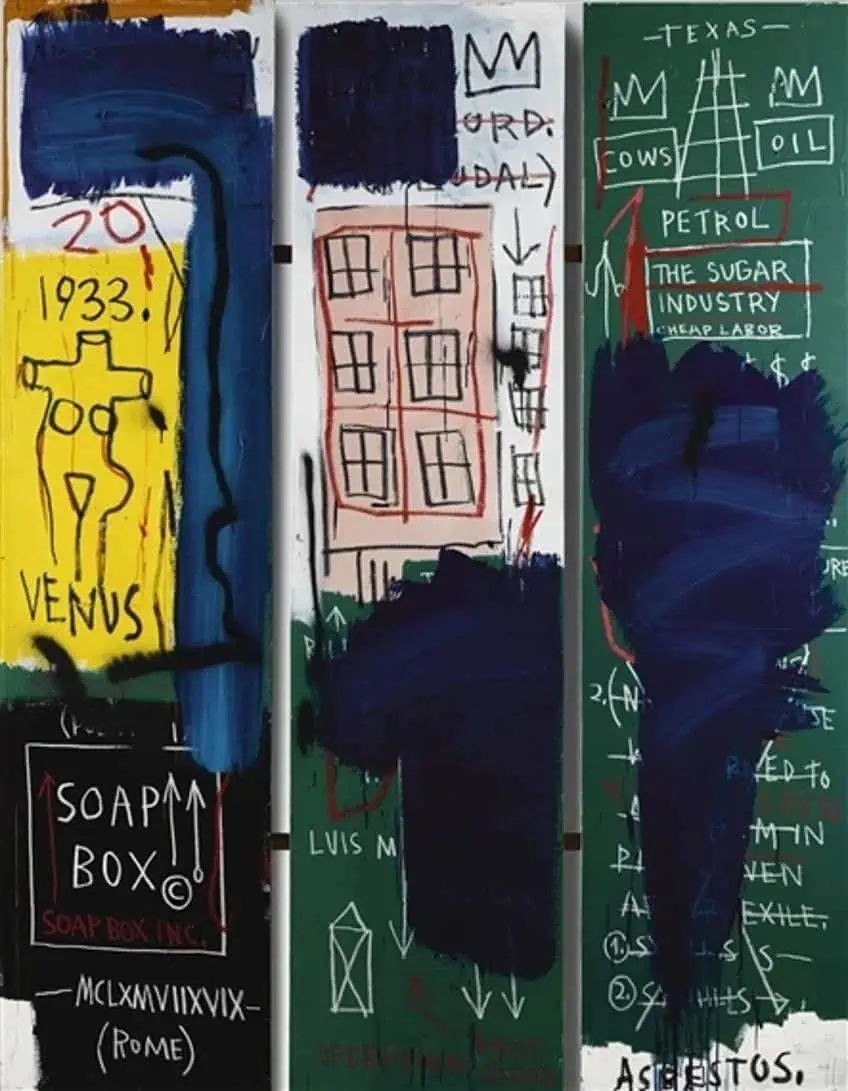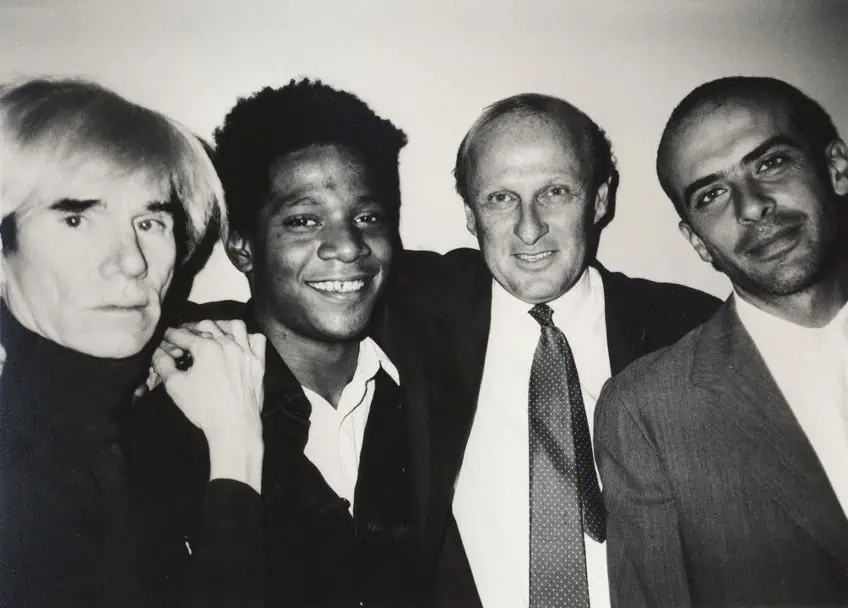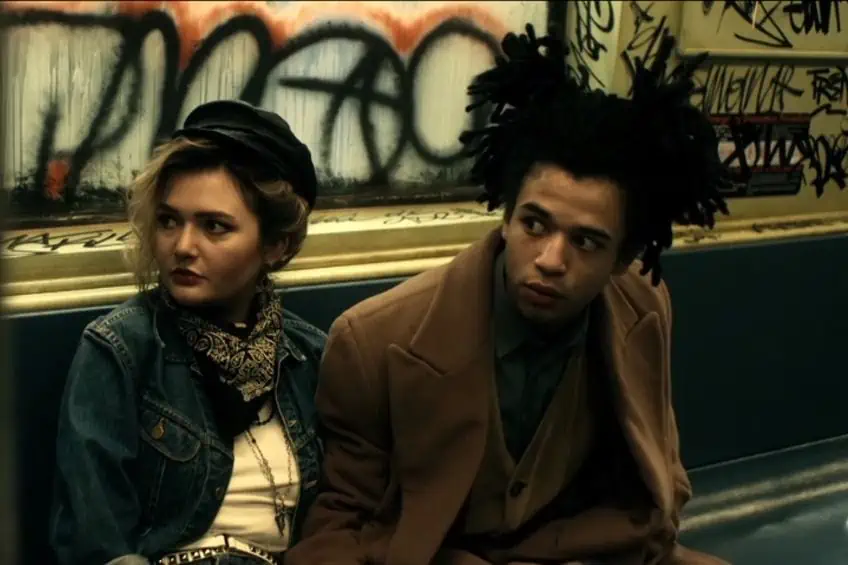“Riding with Death” by Jean-Michel Basquiat – An Analysis
What makes Riding with Death by Jean-Michel Basquiat such an important artwork? Well, for one, it is often regarded as one of Jean-Michel Basquiat’s last paintings. But, what is the Riding with Death meaning? Join us in the article below, as we uncover the relevance and meaning of the Riding with Death painting.
Contents
Understanding the Riding With Death Meaning
Jean-Michel Basquiat was an African-American painter who revitalized the 1980s New York art scene with his drawings and paintings which were produced in the Neo-Expressionist style. Today, we will be looking at one of Jean-Michel Basquiat’s last paintings, Riding with Death. The Riding with Death painting features a decomposing man riding the skeleton of a horse. But before we learn more about this intriguing artwork, let us first introduce the famed artist behind the work.

Introducing Jean-Michel Basquiat
| Artist Name | Jean-Michel Basquiat |
| Nationality | American |
| Date of Birth | 22 December 1960 |
| Date of Death | 12 August 1988 |
| Place of Birth | Brooklyn, New York, United States |
Jean-Michel Basquiat was a native of New York City, having been born there in 1960 and subsequently experiencing a meteoric rise to fame in the 1980s as a renowned street art painter. He was struck by a car when he was eight years old, and while he was healing, his mother gave him an edition of a medical textbook that proved eye-opening to the young boy and crucial to his autodidactic education. His mother was sent to a mental hospital when he was only 13 years of age, causing much of the instability of Jean-Michel Basquiat’s youth. After his father kicked him out of the family home for dropping out of school, Basquiat moved to Brooklyn, staying between friends’ residences and supporting himself by selling postcards and handmade t-shirts.
Basquiat’s popularity started to increase in 1976, when he started painting graffiti on buildings.
He was denied admission to numerous art schools and worked as an outsider to the industry until his hard work and determination garnered him respect from the art world and the general public. It’s hard to imagine how his style would have evolved if he had been accepted into some of these art educational institutions, and maybe the fact that he was on the outer edges of academic art played a part in his eventual success – guaranteeing his ideas and style was completely his own and unaffected by the more conventional individuals who were essentially a part of what he regarded as the establishment.

During the same period, he met the famous Pop artist Andy Warhol, who became his mentor, expanding his knowledge of art while also attempting to steer the young artist away from the most dangerous drugs he was doing at the time. Jean-Michel Basquiat fell into a period of depression after Warhol’s passing in 1987, producing very few new artworks. He started to paint again a year later, but passed away unexpectedly on the 12th of August, 1988, from a cocaine and heroin overdose, at only 27 years of age. He was outspoken about various political issues at the time, and the Riding with Death painting is one such example.
Exploring Riding with Death by Jean-Michel Basquiat
| Date Completed | 1988 |
| Medium | Acrylic and crayon on canvas |
| Dimensions (cm) | 249 x 289 |
| Location | Private collection |
Jean-Michel Basquiat painted an African-American person mounting a skeleton against a textured backdrop in this comparatively stark and basic composition compared to the frantic, colorful explosions for which the artist is most well-known. This artwork features a brown backdrop that seems to have been rushed, with little concern for flattening out the stroke lines that remain. This type of rather bland background is reminiscent of some of the artist Joan Miro’s backgrounds. Both artists employ darkness and the absence of details in order for the next layer to take center stage, and Jean-Michel Basquiat does the same in this piece. There are several intriguing details to analyze if we deconstruct this artwork. The skeleton’s head is turned toward the observer, peering out with dead and empty eyes. The torso of the man on top almost seems to be rotting, with some flesh still remaining, while his arms have been reduced to bones.
The face is likewise left in an abstract state, with multiple outlines overlapping each other and no specific features added.
Inspirations
This disturbing artwork is filled with racial undertones, societal allusions, and sarcasm. The composition is said to have been inspired by a work by Illustration for his Thoughts on Virtue and Envy, a painting by Da Vinci, in which he portrayed a nude lady sitting on all fours on top of a skeleton. It is known that Jean-Michel Basquiat researched Renaissance art in depth and that, despite having an entirely distinct style from the Renaissance-era artists, he revered their incredible technical abilities and acknowledged the importance of grasping the wealth of art history, the majority of which had come from Europe. This painting’s style is undoubtedly associated with primitive or naïve art styles. Basquiat makes reference to his Afro-Caribbean heritage while also drawing inspiration from the art of Europe.
Analysis
Jean-Michel Basquiat’s art style was often seen as primitive by reviewers, and this work appears to be playing on that perception by imitating African tribal art or cave paintings rather than the Western versions of figurative art. In doing so, he fills this artwork with subtle references to society and racism, establishing a dialogue between history and the present. There are numerous interpretations of what we see in this artwork – might he be representing the collapse of white society, with African Americans finally triumphing? He could perhaps be posing a power structure reversal by placing the black person on top.
Or is it an overall concern for society as a whole?
By placing this man on top of a skeleton, a representation of death, he also appears to express an overwhelming feeling of gloom for the impending demise of the society in which he lives. The artist clearly identifies with this rider as he had already witnessed it, with not only the passing of Andy Warhol but also of a number of his colleagues, who had died due to AIDS. The incorporation of a triangle in the design not only evokes Renaissance ideas of harmony but also the danger signs found on urban roads. He was not doing so well at the time this artwork was produced, and this could also be the reason the work has such dark and depressing themes.
Jean-Michel Basquiat’s Style
His work frequently included elements from numerous sources such as graffiti art, African-American historical symbols, street culture, and his own personal iconography. In terms of the inspiration for his pieces, he stated that he did not think about art while working, but rather chose to think about life. In fact, he often painted while listening to jazz music, with his windows open and the television on, surrounded by the sounds and influence of New York. Jean-Michel Basquiat referenced concepts and images from a wide range of sources, including history, music, and religion, to provide a social and political perspective on his own life as an African American in contemporary culture.

His highly distinctive style was a similarly eclectic combination, integrating inspirations ranging from his street art debut to the Neo-Expressionism style and frequently merging recurring motifs such as crowns or heads with colors, textured scribbles, and text. These words frequently appear disjointed or fractured, adding to the work’s complexity. His use of text provides a visual as well as a narrative function, letting viewers interact with the work of art on multiple levels. Human figures, skulls, and skeletons also appear often in Basquiat’s works. These figures tend to be depicted in a raw and primitive style. His work often required audiences to confront painful social truths and His art may be viewed as an outlet of self-expression as well as a means of navigating the complexity of the world around him. Basquiat’s art has had a significant impact on popular culture, and his projects with artists such as Andy Warhol only increased his popularity and significance.
That wraps up our look at Riding with Death by Jean-Michel Basquiat. Basquiat moved from graffiti to painting in the late 1970s, and his art combined graffiti with elements of Primitivism and Neo-expressionism. His works were also known for their deeper political and social messages. One such artwork, the Riding with Death painting, portrays a black male figure riding a white skeleton. This has led to various interpretations, ranging from the rise of African Americans to the ill-fated future of all mankind. Whatever its original meaning, it remains to be a striking artwork that reminds us of our own journey towards death, and perhaps a premonition of the artist’s own subsequent death.
Frequently Asked Questions
Who Was Jean-Michel Basquiat?
Basquiat displayed artistic talent from a very young age. His mother encouraged him to pursue his creative talents by exposing him to books about art and taking him to museums. He started to paint graffiti in the late 1970s, which drew notice in the art scene in New York, but by the early 1980s, Basquiat had moved on to painting. Basquiat’s art immediately gained fame and admiration as his work struck a chord with a wide audience, achieving considerable commercial success. He rose to prominence as a cultural icon and a source of inspiration for other artists, singers, and fashion designers. Unfortunately, Jean-Michel Basquiat died of a heroin overdose on the 12th of August, 1988, at the age of 27.
What Was Jean-Michel Basquiat’s Last Painting?
Jean-Michel Basquiat was originally a graffiti artist, but would eventually come to be recognized as among the most important artists of the previous century. It is believed that his last painting was the Riding with Death painting. He produced it in 1988, shortly before dying of a drug overdose. Ironically, the subject of the painting itself is death, preempting his own subsequent passing. In this painting, we can see a dark figure riding a skeleton. The skeleton seems to be looking directly at the viewer, whereas the facial features of the person are indistinct. Unlike many other works by the artist, this one has a rather gloomy and dreary color scheme, which matches the subject matter of the painting.
What Is the Riding with Death Meaning?
Death became a recurring theme in the artist’s life in his final days. His mentor, Andy Warhol, had recently died, along with many of his friends who had passed away from AIDS. The artist himself was struggling with a drug addiction and would end up dying from an overdose in the same year this painting was produced. The artwork depicts a black figure riding atop a skeleton on all fours. Some say that the figure represents the artist himself, while others say it is symbolic of African Americans. Some also believe that the skeleton represents the Western world, hence why he painted it in a primitive style, harking back to his African heritage. With this painting, he established his supremacy as one of the most significant black American artists throughout the history of painting, as he managed to predict his own sad end and also warned us of the dark future that awaits us all.
What Is Jean-Michel Basquiat’s Legacy?
The iconic artist Jean-Michel Basquiat’s approach pushed the boundaries between low and high art, drawing on graffiti and neo-expressionism to create a distinct visual language that connected with many people. His work was thought-provoking because it provided a platform for exploring challenging as well as uncomfortable subjects such as power, racism, and class. Basquiat grew to be considered a symbol of empowerment for marginalized populations as a black artist, and many saw the artist as a representation of their culture and story. Basquiat’s desire to defy artistic standards and make art that was intensely personal and expressive of his life has inspired other artists to develop distinctive voices without fear of being labeled as conformists. Basquiat’s impact has spurred interest in art education, especially among marginalized communities. His personal story led to initiatives that provide education in art to young artists.
Jordan Anthony is a Cape Town-based film photographer, curator, and arts writer. She holds a Bachelor of Art in Fine Arts from the University of the Witwatersrand, Johannesburg, where she explored themes like healing, identity, dreams, and intuitive creation in her Contemporary art practice. Jordan has collaborated with various local art institutions, including the KZNSA Gallery in Durban, the Turbine Art Fair, and the Wits Art Museum. Her photography focuses on abstract color manipulations, portraiture, candid shots, and urban landscapes. She’s intrigued by philosophy, memory, and esotericism, drawing inspiration from Surrealism, Fluxus, and ancient civilizations, as well as childhood influences and found objects. Jordan is working for artfilemagazine since 2022 and writes blog posts about art history and photography.
Learn more about Jordan Anthony and about us.
Cite this Article
Jordan, Anthony, ““Riding with Death” by Jean-Michel Basquiat – An Analysis.” artfilemagazine – Your Online Art Source. October 4, 2023. URL: https://artfilemagazine.com/riding-with-death-by-jean-michel-basquiat/
Anthony, J. (2023, 4 October). “Riding with Death” by Jean-Michel Basquiat – An Analysis. artfilemagazine – Your Online Art Source. https://artfilemagazine.com/riding-with-death-by-jean-michel-basquiat/
Anthony, Jordan. ““Riding with Death” by Jean-Michel Basquiat – An Analysis.” artfilemagazine – Your Online Art Source, October 4, 2023. https://artfilemagazine.com/riding-with-death-by-jean-michel-basquiat/.


